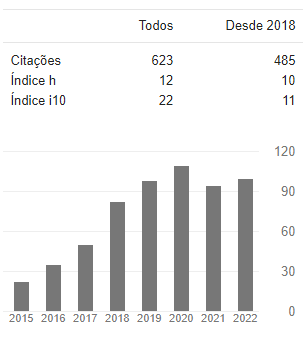Envíos
El registro y el inicio de sesión son necesarios para enviar elementos en línea y para comprobar el estado de los envíos recientes. Ir a Iniciar sesión a una cuenta existente o Registrar una nueva cuenta.
Lista de comprobación para la preparación de envíos
Todos los envíos deben cumplir los siguientes requisitos.
- O arquivo da submissão está em formato Microsoft Word, OpenOffice ou RTF.
- A contribuição é original e inédita, e não está sendo avaliada para publicação por outra revista; caso contrário, deve-se justificar em "Comentários ao editor".
- URLs para as referências foram informadas quando possível.
- O texto está em espaço simples; usa uma fonte de 12-pontos; emprega itálico em vez de sublinhado (exceto em endereços URL); as figuras e tabelas estão inseridas no texto, não no final do documento na forma de anexos.
Aviso de derechos de autor/a
Os trabalhos publicados são de propriedade dos seus autores, que poderão dispor deles para publicações posteriores, sempre fazendo constar a edição original (título original, Revista Educação e Políticas em Debate, volume, número, páginas). Todos os artigos publicados na Revista são de inteira responsabilidade de seus autores, não cabendo qualquer responsabilidade legal sobre seu conteúdo ao Periódico.
Declaración de privacidad
Os nomes e endereços informados nesta revista serão usados exclusivamente para os serviços prestados por esta publicação, não sendo disponibilizados para outras finalidades ou a terceiros.
Atualizado em: 20/06/2023































